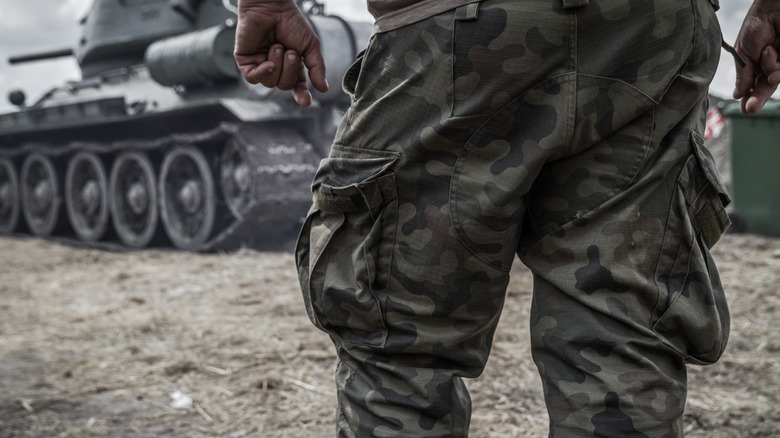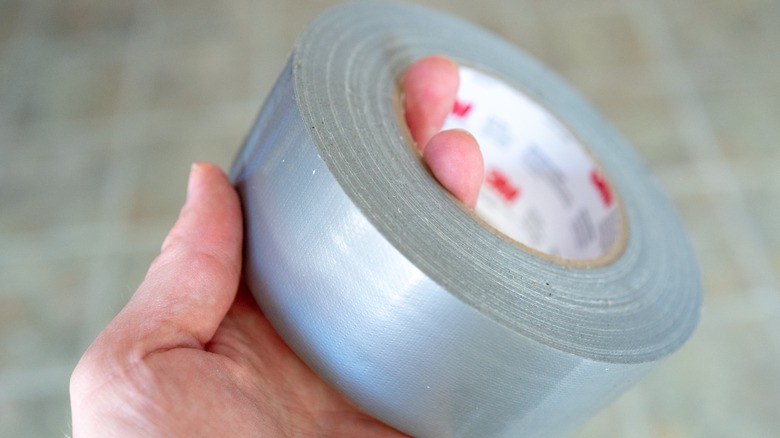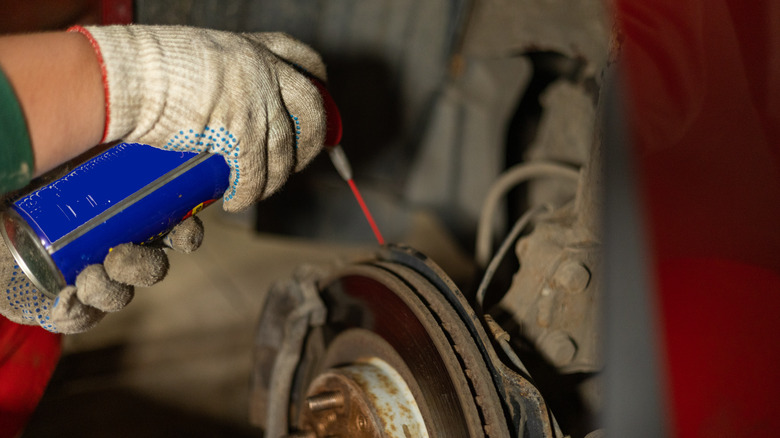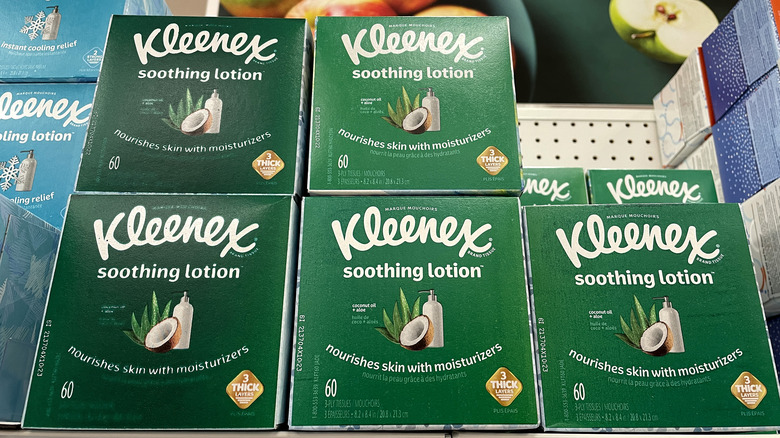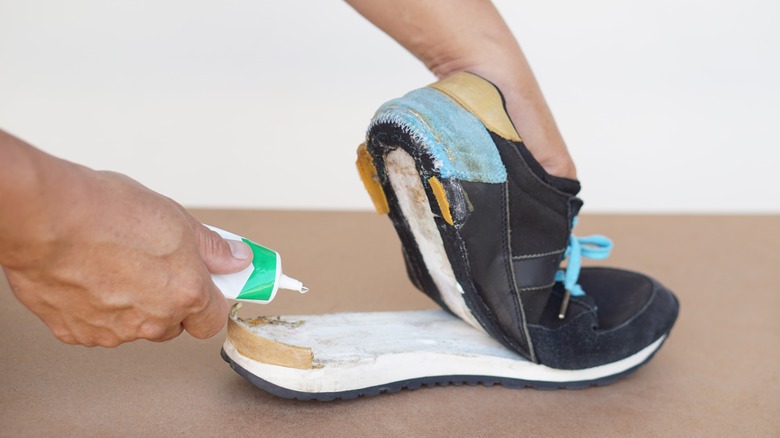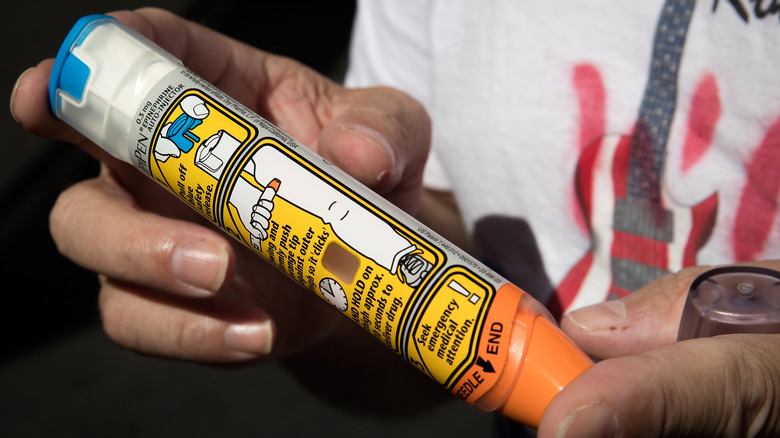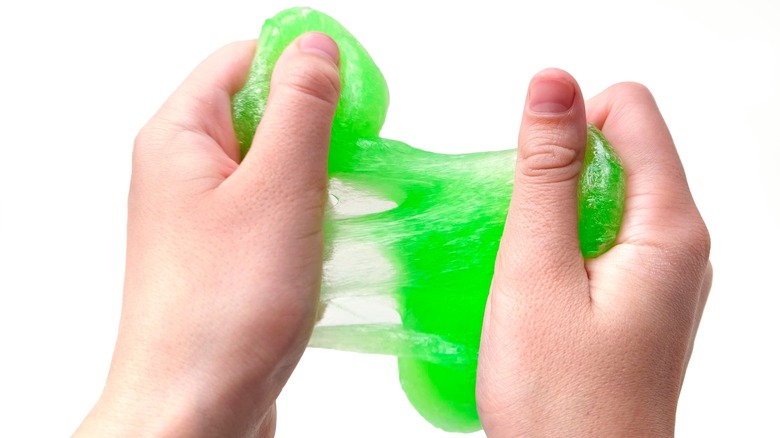Ten Common Household Products Originally Invented For The Military
We may receive a commission on purchases made from links.
Some people say necessity is the mother of invention, but war is another major contributor. Countless items have been created for the sole purpose of killing enemy soldiers or keeping your soldiers safe. Still, what happens after the war is over and the technology (or its products) are still around? They can then be repurposed for use in other fields. After all, nothing screams "necessity" quite like favoring projects that save money on research and production.
Many military inventions and their concepts were recycled for use in more constructive fields. For instance, it's no secret that the technology behind radar systems invented to detect hostile aircraft during World War II was adapted to create ultrasound devices for hospitals around the globe. However, not every repurposed military invention is used by the government or private facilities; some will make way into your house or even your pocket without you even realizing it. More importantly, some of these inventions are so innocuous you would never know they are inexorably tied to any country's military.
Here are 10 common household products that we probably wouldn't have if it weren't for war.
Duct Tape
The most crucial tool in the average soldier's belt is the bullet, but how do you make sure troops have enough? It's not as if you can fax bullets directly to infantry, but you can send ammunition via mail — sort of. However, making sure bullets reach soldiers isn't half as important as making sure they reach soldiers intact.
Duct tape is an indispensable product since it sticks to many materials and creates a heat-resistant, water-resistant seal that locks parts in place. While duct tape works for many projects — including ones to create duct tape dispensers — it is best used to secure cardboard boxes, partially because that's sort of why duct tape was invented.
During World War II, a munitions factory worker by the name of Vesta Stoudt noticed that all the ammunition boxes she shipped out had the same flaw. Back then, the boxes were sealed with paper tape with a dedicated opening tab, and then the box was dipped in wax. This design made the boxes waterproof, but the paper was so thin that the tabs frequently fell off accidentally. Stoudt came up with the concept of a waterproof cloth tape that could be used in place of the existing tape and sent an impassioned letter to President Franklin D. Roosevelt that outlined her idea. She even included diagrams. President Roosevelt forwarded her letter to the War Production Board, which eventually produced her concept, then called 100-mile-per-hour tape.
While Stoudt didn't technically invent duct tape, her letter still probably saved the lives of hundreds of soldiers fighting overseas, two of whom were her sons.
DEET
Sometimes, the most dangerous hazards on the battlefield aren't enemy soldiers or their traps, but disease — particularly bug-borne ones. Good luck fending off attacking enemies when your body is busy fending off malaria. Whenever insects are involved, an ounce of prevention is worth a pound of cure.
Bug spray, also known as insect repellent, is a veritable necessity because it repels insects. You probably don't need to be told how much of a godsend it is to go outside and take a walk in the woods without having to constantly shoo away flies buzzing around your face, but of course, the benefits run far deeper. If you don't have to worry about bugs approaching you, you don't have to worry about contracting any illnesses from them, either.
The first bug sprays included chemicals such as citronella oil, Dialkyl Phthalates, indalone, and Rutgers 612, but in 1946, the US Department of Agriculture invented diethyltoluamide, better known as DEET. This chemical was developed "for use by military personnel in insect-infested areas." DEET proved far more effective than prior bug sprays due to the sheer number of insects it could stave off.
While some bug spray manufacturers no longer use DEET, and research is still ongoing to create better DEET-free repellants, the vast majority of commercially available bug sprays contain at least some DEET because even a tiny bit is crazy potent.
WD-40
Rust can be a serious problem. This material forms when metals such as iron and steel corrode, which not only threatens the structural integrity of the metal but also any sensitive electronics housed within it. Rust is the last thing you want on anything you own, especially if it just so happens to be an intercontinental ballistic missile (ICBM).
WD-40 is commonly used for maintenance jobs of all shapes and sizes. Short for "Water Displacement, 40th formula," WD-40 lubricates everything it's sprayed on, from hinges to gears and locks. If your power tools or car parts start rusting up, a quick spritz will get them working like new, and even prevent more rust from forming. That last purpose is why WD-40 was invented in the first place.
In 1953, the Rocket Chemical Company started working on a line of rust-preventing solvents and degreasers, which they originally wanted to use for the aerospace industry. The company took 40 attempts, but they eventually created what we now know as WD-40. But what to use it on? The aerospace contractor Convair had the answer: Atlas missiles. The manufacturer purchased WD-40 to protect the ICBM's outer skin from rust, and it worked so well that Convair workers reportedly squirreled away their own supplies of WD-40 to use for projects at home.
After WD-40's big break thanks to Atlas missiles, the Rocket Chemical Company's founder, Norm Larsen, tried putting WD-40 in aerosol cans under the assumption that, like Convair employees, customers would find their own uses for the product. Given that most people use it on bicycles and power tools instead of missiles, Larsen was right.
Kleenex (and Menstrual Pads)
The respiratory tract is one of the most important parts of the body. If it's clogged by overproductive mucus glands, you won't be able to breathe effectively. However, keeping external materials out is just as important, especially poisonous gasses. It's almost poetic how a material invented to keep airways clear would become a material that helps you clear them.
World War I reinvented warfare thanks to a variety of deadly tactics, most notably the use of poison gas. In response, armies supplied their forces with gas masks. Not only did these masks come in a variety of shapes, but they also utilized different filters. One such material was crepe paper, manufactured by Kimberly Clark. This paper was also marketed to the military as surgical dressing bandages that could be used in place of then-standard woven gauze. However, crepe paper's most timeless contributions were yet to come.
Kimberly-Clark kept manufacturing their crepe paper after the war, but instead of designing them for gas mask filters, the company adapted them for use as menstrual pads, dubbed the "Kotek Brand." In 1924, Kimberly-Clark reintroduced the product as "Kleenex Brand" and marketed it as a way to remove cold cream. Several years later, Kimberly-Clark reinvented Kleenex yet again, this time as "absorbent kerchiefs," and several years after that, the thin paper sheets finally found their niche as the multipurpose disposable tissues we know and love.
While Kleenex won't do squat to protect your lungs against modern poisonous gasses, we wouldn't have Kleenex tissues without those early war crimes.
Super Glue
The invention process is rarely straightforward. You can start with an idea and try to make it come true, but sometimes, things aren't meant to be. Other times, you end up creating something that is useless for its intended purposes but perfect for others.
Cyanoacrylate, better known as super glue, is a strong, fast-acting adhesive perfect for a variety of projects. The bonding agent is ideal for repairing broken plates, building miniature resin figures, and even sealing cracked windshields. When super glue's inventors, Harry Coover and Fred Joyner, started work on the product, repair was the last thing on their minds. If anything, they wanted to use cyanoacrylate to blow apart objects — and people.
In 1942, Coover aided the war effort by trying to develop clear plastic gun sights. However, instead of working as intended, the material stuck to everything and was viewed as a failure. Then, while working at an Eastman Kodak laboratory, in 1951, Coover rediscovered the adhesive material alongside Joyner while trying to produce a temperature-resistant jet cockpit coating. Again, Coover thought the material was a failure — partially because it accidentally glued two refractometer lenses together, thus ruining the machine. However, he then saw cyanoacrylate for what it was, or to be more specific, what it could be. A few years later, Super Glue, or Eastman 910 as it was called then, was born.
While many companies produce their own brand of super glue, they all owe Coover for his happy accident. After all, he did destroy a $3,000 piece of tech.
EpiPens
Arguably, the coolest sci-fi device from Star Trek has to be the hypospray. Sure, some people would probably prefer a phaser or tricorder, but one cannot deny the appeal of a medical gadget that injects life-saving medication into the body without triggering trypanophobia (fear of needles). While hyposprays don't exist, we do have the second-best thing.
In the early 1970s, one of the founders of Survival Technology Inc. attended a military medical conference and learned that many soldiers had difficulty self-treating themselves for nerve agent exposure. This realization inspired the company's next big project: a device that could inject a lot of medicine in a short amount of time without the need for acute finger dexterity. However, there was more to the device than just injecting an antidote. The dosage had to be precise, and the needle had to be capable of penetrating clothing along with the skin. Engineers eventually produced a spring-loaded injector called the ComboPen, which was provided to soldiers in several subsequent military campaigns, including Operation Desert Storm.
The ComboPen, which was technically two devices, was originally filled with atropine and pralidoxime, but engineers later redesigned and upgraded the ComboPen to make it one single injector with diazepam. In 1987, the FDA approved the ComboPen for use in the civilian sector to people with severe allergies. This version of the ComboPen was filled with epinephrine (adrenaline) and renamed the "EpiPen."
White you need a prescription to own one, you can still find EpiPens in countless households, used to prevent life-threatening allergic reactions.
Silly Putty
Supply chains are crucial to any industry, especially during wartime. You can't give soldiers new clothes and ammo if you can't receive the materials needed to create supplies. When a supply chain is disrupted, or dare we say sabotaged, you have to find alternative resources or make them yourself.
During the 1940s, even after Japanese forces bombed Pearl Harbor, the Japanese Empire focused much of its attention on Asia. This threw a monkey wrench into the U.S. supply chain because manufacturers relied on rubber from Asian countries to mass-produce boots and truck tires. In response, the American War Production Board charged manufacturing companies to invent a synthetic rubber replacement. One of the most historically significant contributors was General Electric's James Wright. He combined boric acid and silicone oil to create, for lack of a better term, a "solid liquid." The material was stretchy, immune to decay, and even bouncier than rubber, but it never saw any wartime use because nobody could think of one.
While Wright entertained party guests with his imitation rubber, he never thought the material would amount to anything. Turns out he wasn't targeting the right demographic. One day, toy marketer Peter Hodgson advertised the invention putty in his magazine and listed it as a novelty item. He also filled colored plastic eggs with the stuff and sold them for $1 under the name "Silly Putty." Hodgson's gamble paid off.
Today, Silly Putty is recognized the world over, quite literally, since Apollo 8 astronauts used it to secure tools while in outer space.
Microwave Ovens
As previously stated, many inventions are the result of accidents. Usually, these marvelous mishaps occur during the creation process, but sometimes, someone stumbles into an alternative use for an existing gadget after the fact. All it takes is a bit of luck and the right item in the wrong place.
During World War II, Percy L. Spencer produced radar equipment. His largest contribution to the war effort was the compact cavity magnetron, a high-powered vacuum tube that could generate microwaves and detect enemy planes and submarines. He didn't invent the magnetron, but he did figure out how to mass-produce the device. After the war ended, Spencer continued experimenting with the magnetron at Raytheon laboratories. One day, he had a chocolate bar in his pocket and noticed it started to melt when he approached the magnetron. Realizing this, he conducted another experiment by holding a bag full of popcorn kernels next to the magnetron. You probably know what happened next.
After these experiences, Spencer worked on developing the magnetron for culinary purposes, which eventually resulted in the first commercial microwave. However, the first functional draft of the microwave oven was a far cry from the small cabinet-like devices we generally see on kitchen countertops. The first microwave oven, marketed as the "Radarange," stood six feet tall and weighed 750 pounds. Also, it cost around $3,000.
It took 20 years to create the microwave as we know it. In 1967, Amana sold the first countertop microwave. Several years later, Spencer passed away on September 9, 1970.
Cargo Pants
We've all seen camo pants, but while military outfits inspire the colors, the clothes they're attached to rarely have any connection to army fashions. However, one piece of non-camo clothing does.
According to author Brian Jewell in his book, British Battledress 1937-61, cargo pants first debuted in 1937 (or 1938, depending on who you ask) because "the War Office grew increasingly aware of the need for a new and more rational combat dress." These pioneering pants consisted of pocketed trousers that were designed to keep British soldiers warm and camouflaged while also giving them extra storage. At least, that was the plan. Ironically, the pocket was poorly implemented and defeated its own purpose, but two out of three ain't bad.
While British soldiers didn't like cargo pants at first, the concept caught on quickly, especially in the United States. Many branches of the U.S. military copied the design, and by World War II, numerous armed forces were outfitted with cargo pants, most notably paratroopers — the pockets were ideal for carrying extra ammo. Eventually, the civilian sector caught on as well. By the '90s, cargo pants were as synonymous with U.S. fashion as backward ball caps, polo shirts, and Air Jordans.
Unlike many fashion trends of the '90s (we're looking at you, flat top haircuts), cargo pants never died. You can still find plenty of people wearing them because you can never have too much pocket space.
Cheetos
As the saying goes, an army marches on its stomach. People need food if they're going to fight, and since restaurants don't cater to battlefields, soldiers have to rely on whatever HQ can ship them. Novel packing and production techniques resulted in several new food staples that eventually turned into surplus. As another saying goes, waste not want not.
At the start of World War II, the U.S. Army began using new food packing techniques, specifically dehydration and compression. By removing water, thus cutting down on a food's volume, shippers could transport more rations in one go. This technique worked for most food staples, except meat and cheese. The military funded numerous projects on how to dehydrate cheese, and in 1943, USDA dairy scientist George Sanders invented the answer: cheese powder. Unlike most dehydrated foods that were meant to be rehydrated, cheese powder was packed and shaped into "cheesecakes." In 1945, the war ended, so the government sold its leftover cheese powder to grocery manufacturers as surplus.
Wired postulated that corporations purchased the leftover curd crumbles to use dehydrated cheese as a cheap additive that could be mixed into recipes. Companies could also save a ton on storage. The Frito Company was the first corporation to unveil a food made out of surplus cheese powder, allegedly because the company had existing military contracts that funded the construction of additional cooking plants. Oh, and the name of Frito's snack? Cheetos.
While Cheetos weren't made for the military, the dehydrated cheese that serves as its lifeblood wouldn't exist without the army.
